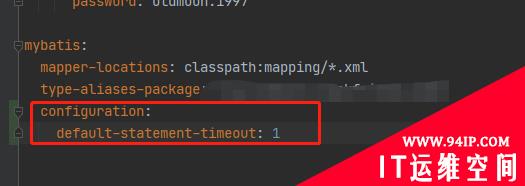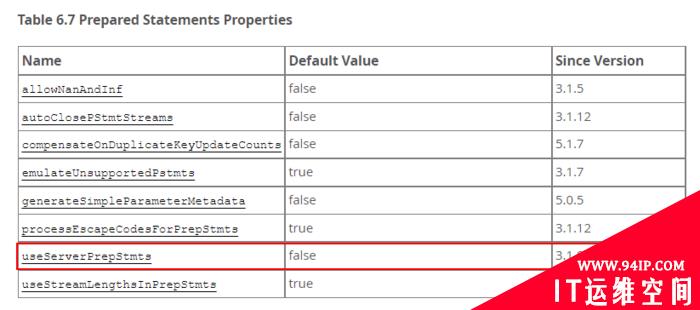负载均衡的概念来源于集群的定义,集群中的一项技术就是负载均衡。那么作为服务器的一项规划和分配的方式,我们如何在系统中达成这个目的呢?下面就为大家介绍一下如何搞定负载均衡配置。首先要了解我们的使用环境。那么本文的例子是4台服务器的硬件环境。
(一)负载均衡配置环境说明 (1)服务器有4台,一台安装apache,三台安装tomcat (2)apache2.0.55、tomcat5.5.15、jk2.0.4、jdk1.5.6或jdk1.4.2 (3)ip配置,一台安装apache的ip为192.168.0.88,三台安装tomcat的服务器ip分别为192.168.0.1/2/4
(二)负载均衡配置的软件安装过程 (1)在三台要安装tomcat的服务器上先安装jdk (2)配置jdk的安装路径,在环境变量path中加入jdk的bin路径,新建环境变量JAVA_HOME指向jdk的安装路径 (3)在三台要安装tomcat的服务器上分别安装tomcat,调试三个tomcat到能够正常启动 (4)tomcat的默认WEB服务端口是8080,默认的模式是单独服务,我的三个tomcat的WEB服务端口修改为7080/8888/9999 修改位置为tomcat的安装目录下的conf/server.xml 修改前的配置为
<Connectorport="8080"maxHttpHeaderSize="8192" maxThreads="150"minSpareThreads="25"maxSpareThreads="75" enableLookups="false"redirectPort="8443"acceptCount="100" connectionTimeout="20000"disableUploadTimeout="true"/>
修改后的配置为
<Connectorport="7080"maxHttpHeaderSize="8192" maxThreads="150"minSpareThreads="25"maxSpareThreads="75" enableLookups="false"redirectPort="8443"acceptCount="100" connectionTimeout="20000"disableUploadTimeout="true"/>
依次修改每个tomcat的监听端口(7080/8888/9999) (5)分别测试每个tomcat的启动是否正常 http://192.168.0.1:7080 http://192.168.0.2:8888 http://192.168.0.4:9999/#p#
(三)负载均衡配置过程 (1)在那台要安装apache的服务器上安装apache2.0.55,我的安装路径为默认C:\Program Files\Apache Group\Apache2 (2)安装后测试apache能否正常启动,调试到能够正常启动http://192.168.0.88 (3)下载jk2.0.4后解压缩文件 (4)将解压缩后的目录中的modules目录中的mod_jk2.so文件复制到apache的安装目录下的modules目录中,我的为 C:\Program Files\Apache Group\Apache2\modules (5)修改apache的安装目录中的conf目录的配置文件httpd.conf,在文件中加LoadModule模块配置信息的***加上一句 LoadModule jk2_module modules/mod_jk2.so (6)分别修改三个tomcat的配置文件conf/server.xml,修改内容如下 修改前
<!--AnEnginerepresentstheentrypoint(withinCatalina)thatprocesses everyrequest.TheEngineimplementationforTomcatstandalone analyzestheHTTPheadersincludedwiththerequest,andpassesthem ontotheappropriateHost(virtualhost).--> <!--YoushouldsetjvmRoutetosupportload-balancingviaAJPie: <Enginename="Standalone"defaultHost="localhost"jvmRoute="jvm1"> --> <!--Definethetoplevelcontainerinourcontainerhierarchy--> <Enginename="Catalina"defaultHost="localhost">
修改后
<!--AnEnginerepresentstheentrypoint(withinCatalina)thatprocesses everyrequest.TheEngineimplementationforTomcatstandalone analyzestheHTTPheadersincludedwiththerequest,andpassesthem ontotheappropriateHost(virtualhost).--> <!--YoushouldsetjvmRoutetosupportload-balancingviaAJPie:--> <Enginename="Standalone"defaultHost="localhost"jvmRoute="tomcat1"> <!--Definethetoplevelcontainerinourcontainerhierarchy <Enginename="Catalina"defaultHost="localhost"> -->
将其中的jvmRoute="jvm1"分别修改为jvmRoute="tomcat1"和jvmRoute="tomcat2"和 jvmRoute="tomcat3" (7)然后重启三个tomcat,调试能够正常启动。 (8)在apache的安装目录中的conf目录下创建文件workers2.propertie,写入文件内容如下#p#
#finethecommunicationchannel [channel.socket:192.168.0.1:8009] info=Ajp13forwardingoversocket #***个服务器负载均衡配置 tomcatId=tomcat1#要和tomcat的配置文件server.xml中的jvmRoute="tomcat1"名称一致 debug=0 lb_factor=1#负载平衡因子,数字越大请求被分配的几率越高 #Definethecommunicationchannel [channel.socket:192.168.0.2:8009] info=Ajp13forwardingoversocket tomcatId=tomcat2 debug=0 lb_factor=1 #Definethecommunicationchannel [channel.socket:192.168.0.4:8009] info=Ajp13forwardingoversocket tomcatId=tomcat3 debug=0 lb_factor=1 [status:] info=Statusworker,displaysruntimeinformation. [uri:/jkstatus.jsp] info=Displaystatusinformationandcheckstheconfigfileforchanges. group=status: [uri:/*] info=Mapthewholewebapp debug=0
(9)在三个tomcat的安装目录中的webapps建立相同的应用,我和应用目录名为TomcatDemo,在三个应用目录中建立相同 WEB-INF目录和页面index.jsp,index.jsp的页面内容如下
<%@pagecontentType="text/html;charset=GBK"%>
<%@pageimport="java.util.*"%>
<html><head><title>ClusterAppTest</title></head>
<body>
ServerInfo:
<%
out.println(request.getLocalAddr()+":"+request.getLocalPort()+"<br>");%>
<%
out.println("<br>ID"+session.getId()+"<br>");
//如果有新的Session属性设置
StringdataName=request.getParameter("dataName");
if(dataName!=null&&dataName.length()>0){
StringdataValue=request.getParameter("dataValue");
session.setAttribute(dataName,dataValue);
}
out.print("<b>Session列表</b>");
Enumeratione=session.getAttributeNames();
while(e.hasMoreElements()){
Stringname=(String)e.nextElement();
Stringvalue=session.getAttribute(name).toString();
out.println(name+"="+value+"<br>");
System.out.println(name+"="+value);
}
%>
<formaction="index.jsp"method="POST">
名称:<inputtype=textsize=20name="dataName">
<br>
值:<inputtype=textsize=20name="dataValue">
<br>
<inputtype=submit>
</form>
</body>
</html>
(10)重启apache服务器和三个tomcat服务器,到此负载 均衡已配置完成。测试负载均衡配置先测试apache,访问http://192.168.0.88/jkstatus.jsp 能否正常访问,并查询其中的内容,有三个tomcat的相关配置信息和负载说明,访问http://192.168.0.88/TomcatDemo /index.jsp看能够运行, 能运行,则已建立负载均衡。#p#
(四)tomcat集群配置 (1)负载均衡配置的条件下配置tomcat集群 (2)分别修改三个tomcat的配置文件conf/server.xml,修改内容如下 修改前
<!-- <ClusterclassName="org.apache.catalina.cluster.tcp.SimpleTcpCluster" managerClassName="org.apache.catalina.cluster.session.DeltaManager" expireSessionsOnShutdown="false" useDirtyFlag="true" notifyListenersOnReplication="true"> <Membership className="org.apache.catalina.cluster.mcast.McastService" mcastAddr="228.0.0.4" mcastPort="45564" mcastFrequency="500" mcastDropTime="3000"/> <Receiver className="org.apache.catalina.cluster.tcp.ReplicationListener" tcpListenAddress="auto" tcpListenPort="4001" tcpSelectorTimeout="100" tcpThreadCount="6"/> <Sender className="org.apache.catalina.cluster.tcp.ReplicationTransmitter" replicationMode="pooled" ackTimeout="5000"/> <ValveclassName="org.apache.catalina.cluster.tcp.ReplicationValve" filter=".*\.gif;.*\.js;.*\.jpg;.*\.png;.*\.htm;.*\.html;.*\.css;.*\.txt;"/> <DeployerclassName="org.apache.catalina.cluster.deploy.FarmWarDeployer" tempDir="/tmp/war-temp/" deployDir="/tmp/war-deploy/" watchDir="/tmp/war-listen/" watchEnabled="false"/> <ClusterListenerclassName="org.apache.catalina.cluster.session.ClusterSessionListener"/> </Cluster> -->
修改后
<!--modifybywhh--> <ClusterclassName="org.apache.catalina.cluster.tcp.SimpleTcpCluster" managerClassName="org.apache.catalina.cluster.session.DeltaManager" expireSessionsOnShutdown="false" useDirtyFlag="true" notifyListenersOnReplication="true"> <Membership className="org.apache.catalina.cluster.mcast.McastService" mcastAddr="228.0.0.4" mcastPort="45564" mcastFrequency="500" mcastDropTime="3000"/> <Receiver className="org.apache.catalina.cluster.tcp.ReplicationListener" tcpListenAddress="auto" tcpListenPort="4001" tcpSelectorTimeout="100" tcpThreadCount="6"/> <Sender className="org.apache.catalina.cluster.tcp.ReplicationTransmitter" replicationMode="pooled" ackTimeout="5000"/> <ValveclassName="org.apache.catalina.cluster.tcp.ReplicationValve" filter=".*\.gif;.*\.js;.*\.jpg;.*\.png;.*\.htm;.*\.html;.*\.css;.*\.txt;"/> <DeployerclassName="org.apache.catalina.cluster.deploy.FarmWarDeployer" tempDir="/tmp/war-temp/" deployDir="/tmp/war-deploy/" watchDir="/tmp/war-listen/" watchEnabled="false"/> <ClusterListenerclassName="org.apache.catalina.cluster.session.ClusterSessionListener"/> </Cluster> <!--modifybywhh-->
将集群配置选项的注释放开即可,如上。 (3)在Conf目录下建立jk2.properties文件,写入下面一行,其中端口为相应的Tomcat对应的AJP端口。channelSocket.port=8009 (4)重启三个tomcat。到此tomcat的集群已配置完成。#p#
(五)应用配置 对于要进行负载均衡配置和集群的tomcat目录下的webapps中的应用中的WEB-INF中的web.xml文件要添加如下一句配置<distributable/> 配置前
<?xmlversion="1.0"encoding="UTF-8"?> <web-appxmlns="http://java.sun.com/xml/ns/j2ee" xmlns:xsi="http://www.w3.org/2001/XMLSchema-instance" xsi:schemaLocation="http://java.sun.com/xml/ns/j2eehttp://java.sun.com/xml/ns/j2ee/web-app_2_4.xsd" version="2.4"> <display-name>TomcatDemo</display-name> </web-app>
配置后
<?xmlversion="1.0"encoding="UTF-8"?>
<web-appxmlns="http://java.sun.com/xml/ns/j2ee"
xmlns:xsi="http://www.w3.org/2001/XMLSchema-instance"
xsi:schemaLocation="http://java.sun.com/xml/ns/j2eehttp://java.sun.com/xml/ns/j2ee/web-app_2_4.xsd"
version="2.4">
<display-name>TomcatDemo</display-name>
<distributable/>
</web-app>
转载请注明:IT运维空间 » 运维技术 » 实战负载均衡配置的步骤大全

![[Oracle]复习笔记-SQL部分内容](/zb_users/upload/2023/02/25/20230213095820-63ea09bc55070.jpg)








![[ORACLE]查看SQL绑定变量具体值 查看SQL绑定变量值](https://94ip.com/zb_users/theme/ydconcise/include/random/1.jpg)







发表评论